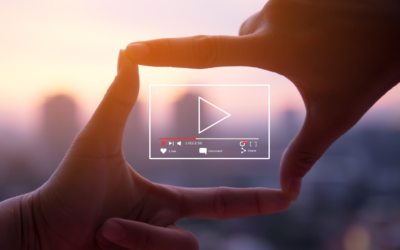Remember Tower Records? Tom Hanks’ son Colin recently directed a great documentary about that fallen empire, nostalgic to us pre-millennial, pre-hipster music collectors who spent sinful amounts of money on actual stuff that you couldn’t just download. They were called “imports”! Tower Records used to give out a free rag called “Pulse!” with a regular column titled Desert Island Discs. They weren’t the only ones, but in Pulse!, the D.I.D. page was an institution.
It’s actually a great way to think about lots of things, not just music. Like: if you got stuck on a desert island, and could only bring seven things to make a movie, what would they be? Hard choices!
FWIW, here’s my D.I.G.: Desert Island Gear, lucky seven edition.
Sony a7S II

This is the camera I was holding out for. It checks off all the boxes: in-body image stabilization, full-frame sensor, low-light sensitivity, packable form factor, flies on a small gimbal (see item 2), and records 4K internally. I wrote some production notes after using its near-twin a7R II here, and have just finished another documentary using the a7S II here.
CAME-Single

I was an early adopter of those big handlebar-sized 3-axis brushless motorized gimbal stabilizers, including the CAME-7800 (that I tricked out with mods), but the holy grail for me was to get that same incredible functionality in a portable size that I could stash in a backpack. Filmpower nailed it when they were first-to-market with their Nebula 4000 Lite, and I got it right away, finding a match made in heaven with the Blackmagic Pocket Cinema Camera. I made one of first professional films using that combo, and wrote about it here. Since then, I’ve used it to make several dance films, and shot everything in Josephine Decker’s newest film with it, heading in a couple of weeks to South by Southwest as a headliner entry in-competition. All that nostalgia aside, the Nebula 4000 Lite got edged out by the CAME-Single’s minor improvements: 32-bit encoders, more weight capacity, and long battery life. It can carry a whole film, literally: tripod optional. I used it recently to shoot most of this film.
RØDE Stereo VideoMic X

I remember the moment like it was yesterday: This dream bulb I’d been waiting years for finally arrived. Its price tag was a bomb: $800! One of those “oh great, there goes my money” moments. But I’m loathe to admit that it’s worth it. Sound technology doesn’t change every year like cameras, and this thing’s built to last. Stereo audio capture is an underestimated necessity, and I love the versatility of this thing to either plug into a simple camera jack, or to deliver balanced XLR audio. After giving it a full workout, I created a fun video review here.
Sony 28-135mm f/4 Cine Lens

And this is like, if you had to pick just one. It’s got to start with a zoom, for focal range, but that’s usually where the compromises begin. Not so much here. I love that it has a continuous f/4 aperture, but also, a parfocal design that keeps its focus as you zoom. And rather than focus-by-wire, it has hard stops on its wide-barrel focus ring, with clickless manual aperture control, and on-lens switches for everything. It’s bulky, but it’s worth it. I shot this concertusing it on the A-camera (literally, the a7S II), adding angles from a GH4 and BMPCC.
Sony 55mm f/1.8 Prime Lens

OK, I’ll cheat. You’ve got to have at least one prime lens, too. This one also gives sticker shock, but it feels so good, it’s worth it. With Zeiss optics, it’s one of the tack-sharpest lenses on the market, and you could shoot nearly a whole film with it, as I did recently. Plus, item 2 on this list wouldn’t really fly with that monster cine lens hooked on, right?
Atomos Shogun

It was a rocky launch and an endless wait, but how can you not have warm feelings in hindsight? Atomos was David to the industry’s Goliath, and they tried to throw everything in but the kitchen sink. Yet there was a giddiness in the way that they really tried to maximize our consumer value, from down under, compared to the nickel-and-diming we know better from the Far East. And this thing still rocks. When Sony’s XAVC codec fails to keep up, falling to pieces in macro-blocks, the Shogun has got you covered. And its full HD screen is bright & crisp. I mean, you’re stuck on a desert island: you’ll want to watch what you make without having to peek into a viewfinder. It isn’t a living room TV, but it’ll do. When it launched, I did one of the first test runs, and wrote about it here.
V-Mount Battery and Adapter

Oh, right…if I’m stranded on a desert island, I need power. To make it last, it’s gotta be big: that’ll be V-Mount, and we don’t have to worry about airline security, so a Kayo Maxtar (or anything else at 12000 mAh) will do. I paired it with an adapter sled that can feed and charge all the stuff in this list, and wrote about it here.
So, that was fun. But I hope it never happens. The movie would suck hard. Thinking back to Tom Hanks, I’d probably end up drawing faces on stuff and dubbing conversations between them — in pristine 4K resolution, that is. But let me know below what you’d bring, won’t you?
About Contributing Writer – H. Paul Moon

H. Paul Moon is a filmmaker, composer and video artist. Through his production company www..comzenviolence, he profiles performing and visual artists who span boundaries from classical arts to new media technologies. He lives and works in Washington, D.C., and manages online filmmaker communities at www.focuspulling.com andwww.docofilm.com. He is the recipient of the Emergence award at Docs In Progress, where he teaches video editing as an Adobe Certified Expert. Recently he worked as a small camera specialist for a Paramount feature film starring Will Ferrell and Mark Wahlberg, and was resident dance filmmaker at Experimental Film Virginia in Cape Charles, Virginia. He recently served as director of photography, camera operator, and colorist for director Josephine Decker’s film in “collective:unconscious” that debuted in competition at the South by Southwest Festival.



